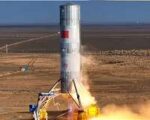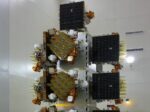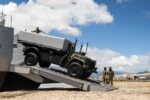In October 2025, the United States Navy and Japan Maritime Self-Defense Force (JMSDF) carried out a significant joint naval operation in the Philippine Sea. The maneuver involved carrier strike groups and amphibious forces from both nations and underscores an evolving defense posture aimed at deterring regional threats—chiefly China’s growing maritime assertiveness.
Carrier Strike Groups Lead High-End Bilateral Naval Exercise
The centerpiece of the operation was the combined deployment of the USS Ronald Reagan (CVN-76) Carrier Strike Group (CSG) alongside Japan’s JS Izumo (DDH-183), a helicopter destroyer recently upgraded to support F-35B operations. Both vessels were accompanied by their respective escorts—Aegis-equipped destroyers such as USS Shoup (DDG-86) and JS Maya (DDG-179)—and supported by P-8A Poseidon maritime patrol aircraft and SH-60K helicopters.
This marked one of the most complex bilateral naval exercises between the two allies to date. According to official statements from U.S. Indo-Pacific Command and Japan’s Ministry of Defense, operations included:
- Cross-deck flight operations involving F/A-18E/F Super Hornets and F-35Bs
- Anti-submarine warfare drills using MH-60R/S helicopters
- Surface action group coordination with live-fire gunnery exercises
- Amphibious landing simulations involving JS Kunisaki (LST-4003) and elements of the U.S. 31st Marine Expeditionary Unit
Strategic Significance Amid Rising Regional Tensions
The timing of this show of force is no coincidence. It follows months of heightened Chinese military activity around Taiwan and increased incursions into Japan’s southwestern airspace near the Senkaku Islands. The Philippine Sea is a critical maritime corridor that links key chokepoints such as the Luzon Strait to broader Pacific sea lanes.
Rear Admiral Michael Donnelly, commander of Carrier Strike Group Five aboard USS Ronald Reagan, emphasized that “these integrated operations demonstrate our shared commitment to defending peace and stability in the Indo-Pacific.” Japanese officials echoed this sentiment while highlighting Tokyo’s revised National Defense Strategy (NDS), which now explicitly names China as its “greatest strategic challenge.”
Japan’s Expanding Role in Maritime Power Projection
The exercise also reflects Japan’s accelerated efforts to transform its traditionally defensive maritime doctrine into one that supports forward presence and power projection. The Izumo-class helicopter destroyers are being retrofitted to operate short takeoff/vertical landing (STOVL) fighters like the F-35B—a capability previously absent from JMSDF inventory.
In parallel with these hardware upgrades, Japan has increased its defense budget beyond 2% of GDP for FY2025—the highest since World War II—and is investing heavily in long-range strike capabilities including Tomahawk cruise missiles procured from the United States.
U.S.-Japan Interoperability Reaches New Heights
This latest exercise builds on a series of interoperability initiatives under frameworks such as “Alliance Coordination Mechanism” (ACM) and “Bilateral Integration Centers.” These aim to enable seamless command-and-control between U.S. INDOPACOM assets and Japanese Self Defense Forces during crisis or conflict scenarios.
The drill incorporated Link-16 data sharing across platforms from both navies, coordinated Aegis missile defense tracking simulations against notional ballistic threats, and joint logistics support via underway replenishment between Japanese tankers like JS Towada (AOE-422) and U.S. supply ships including USNS Rappahannock (T-AO-204).
A Message Beyond Deterrence?
While framed as routine defensive training by both governments, analysts suggest that this scale of bilateral naval activity sends a clear signal not just to Beijing but also to regional partners such as Australia, South Korea, and ASEAN states contemplating deeper security cooperation with Washington or Tokyo.
The Philippines—whose own maritime disputes with China have intensified—recently signed expanded basing agreements under EDCA with the U.S., making it plausible that future iterations of these drills may include trilateral components or even multilateral formats under Quad or ASEAN+ frameworks.










